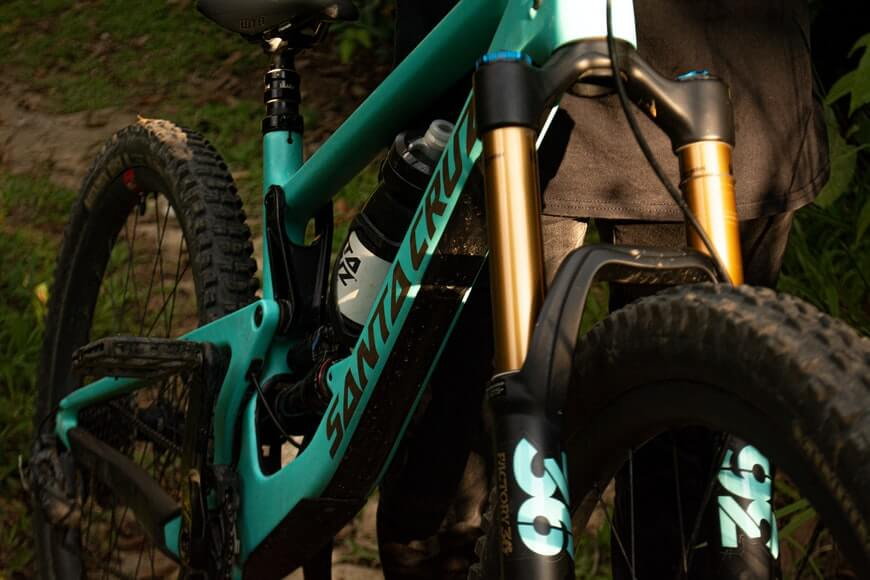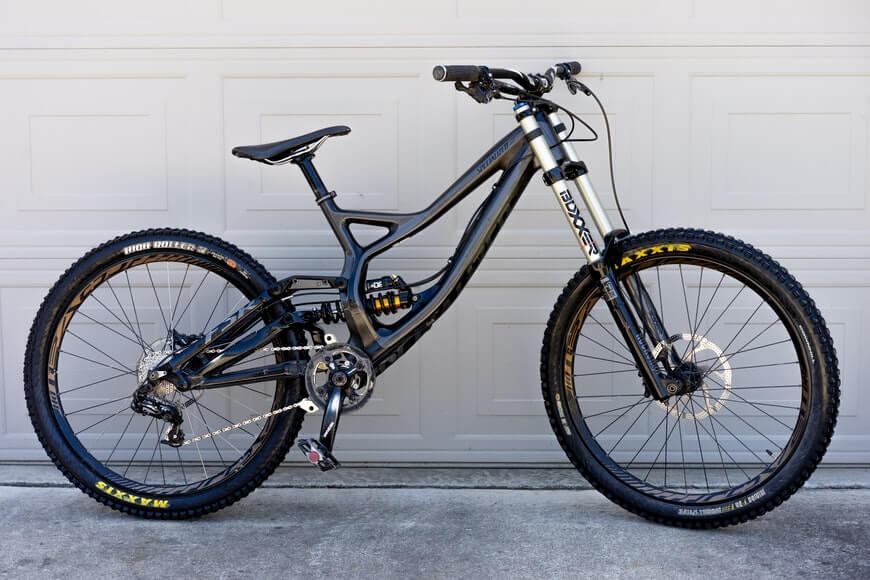Mountain or hybrid bike? You are probably wondering which one is the right bike for you. There is no simple answer; it all depends on your fitness goals, the place you’re planning on riding in, the kind of riding that you want to do, your preferences, and so on.
In this article, we will explain the most important differences between hybrid and mountain bikes, which we believe can help you make the right decision. So, let’s jump right in!
Mountain Bikes vs. Hybrid: Key Differences
Mountain and hybrid bikes have many similarities, such as flat handlebars, wide tires, and disc brakes, and some hybrid bikes, just like mountain bikes come with front suspension too. But the two types of bikes also have their differences.
Mountain bikes can be ridden almost anywhere, but they are specifically designed for tackling rough off-road terrains such as forests, gravel paths, steep descents, and climbs. This type of riding is common in trail centers across the country and in many local woods. They have unique features such as wide handlebars that improve control, oversized tires with a bumpy tread that help with the grip, powerful brakes that help to handle steep descents, shock absorbers that help tackle obstacles or bumps, and so on.
As the name implies, a hybrid bike is a mix of a road bike and a mountain bike. It is suitable for different purposes like riding on hilly mountainous terrains, uneven roads, and of course, smooth city roads too. Hybrid bikes offer the speed of a road bike combined with the comfort of a mountain bike. They are used mostly by riders who commute daily but occasionally ride in the mountains. Hybrid bikes focus on comfort, which can be seen in their features, a mixture of mountain and road bikes.
Take a look at the features of hybrid and mountain bikes below to decide which bike is most suitable for you.
1. Frame
An important difference between a hybrid and a mountain bike is their frame. A hybrid bike has a frame similar to a road bike; it is lightweight and gives you an aerodynamic advantage, which makes these bikes more efficient for road riding. A hybrid has a slimmer and lighter frame compared to a mountain bike because, unlike a mountain bike, a hybrid bike is not designed for taking on extreme conditions.
However, weight and aerodynamics play a smaller role in mountain biking. Many mountain cyclists actually prefer frame strength over lightness.
2. Suspension
Another key difference between mountain bikes and hybrids is the suspension or lack of it. Because a hybrid bike is usually ridden on paved roads, there is no need for suspension since it only adds weight to the bike and increases its cost. However, there are some hybrid bikes that have front suspension. So if you want your hybrid bike to absorb the shock of harsher terrain better, you can go for a front-suspension hybrid.
Mountain bikes usually have front (hardtail) or full suspension. Rigid or lack of suspension is super rare in these bikes because rigid suspension bikes are very uncomfortable to ride on uneven terrain.
Hardtail or front suspension is the most common type of suspension; it absorbs the shock and impact on the front wheel while not adding that much weight to your bike.
Full suspension bikes have both front and rear suspension, which makes them capable of absorbing big bumps and obstacles over rough terrain. Their downside is that full-suspension bikes are quite heavier.
3. Brakes
Hybrid bikes typically have either rim brakes or disc brakes. Disc brakes are more expensive than rim brakes because they are more durable, especially in wet weather conditions. But, many use traditional rim brakes because they are lighter and cheaper.
On the other hand, almost all mountain bikes feature disc brakes. They are stronger and more durable than rim brakes, which makes them better suited for harsh, rocky terrains.
4. Gearing
Because a hybrid bike is expected to spend more time on flattish roads and only occasionally in bumpy environments, they need fewer gears. Meanwhile, mountain bikes are more likely to spend time on rough terrains such as steep downhills, extreme climbs, and so on. And that is why they need a wide range of bike gearing.
5. Tires

Mountain bikes have big, bulky tires with more ‘aggressive’ tread patterns, which provide excellent traction and grip on the trail whether it is dry, wet, or anything in between. But these tires are not perfect for road riding since their size, weight, and friction can slow you down considerably. On the other hand, hybrid bikes come with thinner, smoother tires, which reduce friction and make your riding more efficient.
6. Fenders & cargo racks
Hybrid bikes are often used by commuters, so it’s not surprising that many hybrids come with fenders and/or cargo racks. Fenders can help spare your clothes from some of the mud, dirt, or water that can fling up from the bike onto your clothes. Although fenders and cargo racks are less common on mountain bikes, you may see some people using them.
Cargo racks are also a great option that some hybrids come with. You can strap your goods onto the back of the bike and keep your hands on the handlebars.
7. Handlebars
Hybrid and mountain bikes typically feature flat handlebars; they are easy to handle and maneuver, and they give you a comfortable riding posture. Some hybrids may have drop or mustache bars; these offer various hand positions, thus allowing you a variety of places to grip. Drop handlebars also put you in a lower upright position, giving you an aerodynamic advantage and more control when descending a hill.
8. Seats
Hybrids are built to offer the rider more comfort than mountain bikes, and that is why they come with broader and more comfortable seats. But, since performance is more important for mountain bikers than comfort, their seats are usually more aggressive and less comfortable.
9. Speed
A hybrid bike is definitely faster than a mountain bike on roads because its tires provide less traction and less grip. Furthermore, its frame is lighter and more aerodynamic, which increases the speed. But, if we talk about an off-road situation, a mountain bike will go faster than a hybrid. Their front or full suspension and larger knobby tires will allow you to handle off-road obstacles better.
Hybrid vs. Mountain Bike for Commuting

When choosing a bike for commuting, two popular options are a hybrid bike and a mountain bike. Hybrid bikes are designed to be a versatile combination of a road bike and a touring bike, making them well-suited for commuting on a variety of terrains, including paved roads, bike paths, and light gravel. They typically have a lightweight frame, flat handlebars, and a comfortable saddle, making them easy to handle and control. Mountain bikes, on the other hand, are designed for off-road use and are known for their durability and ruggedness. While they may not be as efficient as hybrid bikes on paved roads, they can handle challenging terrain and offer greater control and stability on rougher surfaces. Ultimately, the choice between a hybrid and a mountain bike for commuting will depend on the specific needs and preferences of the rider, including the type of terrain they will be riding on, the distance of their commute, and their personal style.




